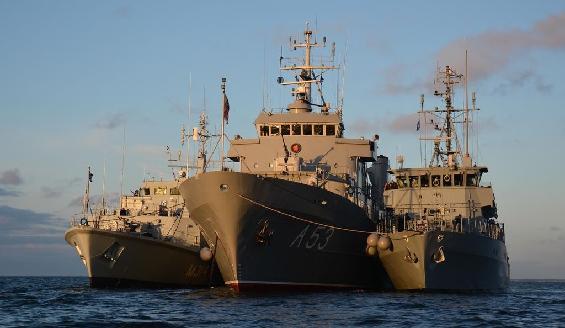NATO Mine Countermeasures Group to visit Turku

Standing NATO Mine Countermeasures Group 1 (SNMCMG1) will arrive in Turku September 1 for a scheduled port visit as part of the group’s deployment in the Baltic Sea. The group will be hosted by the Finnish 4th Mine Countermeasures Squadron, Coastal Fleet.
Finland is one of NATO’s most active partners and a valued contributor to NATO-led operations and missions – it is one of five countries that has enhanced opportunities for dialogue and cooperation with NATO.
During the port visit, the SNMCMG1 command team will meet with local civilian and military leadership in Turku and sailors from the group will have an opportunity to work with their Finnish counterparts to exchange information and enhance interoperability. The port visit is also a great opportunity for the sailors to enjoy a break from operations.
SNMCMG1 is currently composed of the NATO group flagship, Latvian coastal minelayer and command ship LVNS Virsaitis, Estonian minehunter ENS Sakala, German minehunter FGS Sulzbach-Rosenberg and Norwegian minesweeper HNoMS Rauma.
Some of the ships will be open and welcome visitors aboard September 2 from 10:00 – 12:00 and September 3 from 12:00 – 14:00. The ships will be at Turku Passenger Harbour (entry from Linnankatu 72, Forum Marinum).
Security measures during open ships. For security reasons, the following is not allowed to be brought on board: large bags, backpacks etc.; weapons or dangerous objects; cameras, cell phones, tablets, computers etc. All visitors and their baggage may be subject to search before entry.
Standing NATO Mine Countermeasures Group One (SNMCMG1) is one of four standing NATO maritime groups. The groups are a multinational, integrated maritime force made up of vessels from various allied countries. These vessels are ready assets, available to NATO to perform different tasks ranging from participating in exercises to intervening in operational missions. These groups provide NATO with a continuous maritime capability for operations and other activities in peacetime and in periods of crisis and conflict. They also help to establish Alliance presence, demonstrate solidarity, conduct routine diplomatic visits to different countries, support transformation and provide a variety of military maritime capabilities to ongoing missions.



